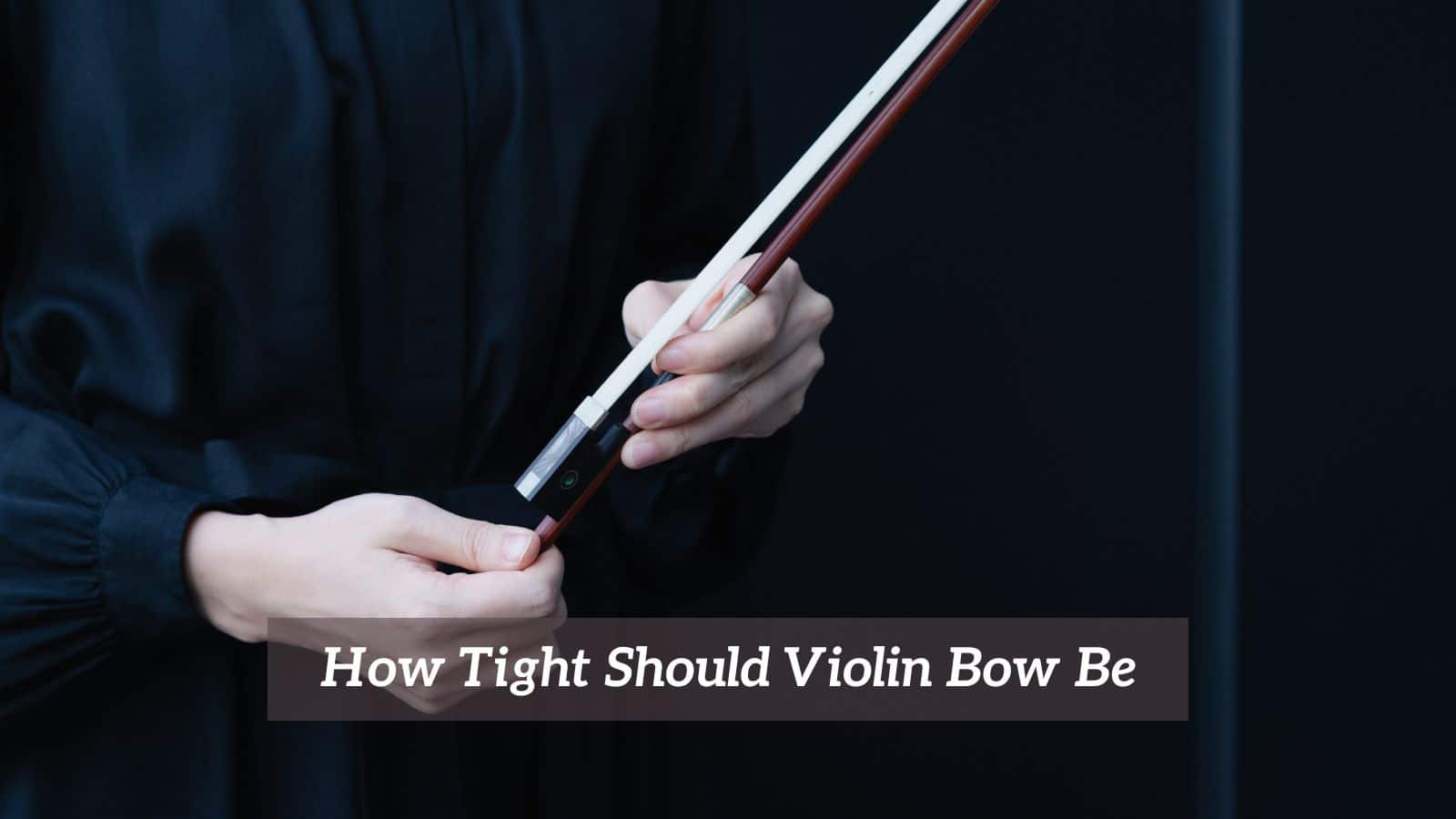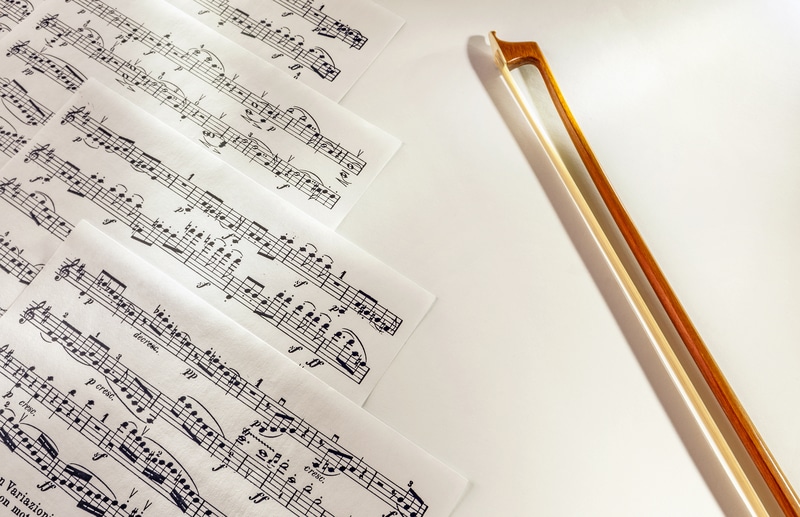
Every violinist is driven to obtain the most beautiful sound of their instruments. Perhaps a question that every violinist has asked him/herself in order to improve sound quality is how tight the hair of the bow should be.
For sure the whole process takes not little experimentation. But, is there an answer to this question that is common to most violinists? Is there a specific degree of hair tension for the perfect sound?
Well, in this article we will talk about how to adjust the hair tension to obtain the most beautiful sound.
How Tight Should The Violin Bow Be
Quality of the bow
Before talking about the needs of the violinist, we need to check if the bow itself is good enough to handle constant deformations due to hair tension. Imagine that everytime the player turns the screw of the bow, the shape of the bow is affected.
If the bow is of cheap quality – which usually means extreme flexibility – no matter how tense the hair is, the bow will never reach the necessary firmness for a good playability. That means that the bow will always appear to be bouncy and the sound uneven.
The natural tendency of every player and perhaps the only solution, in this case, is to keep the tension of the bow high so as to keep the bow more firm, and consequently producing a bigger sound.
But, by applying too much tension to the hair, the bow will lose its natural curvature and become more and more flat in a matter of months or years. Now add this to the fact that many beginners usually make this big mistake: leaving the bow inside the case with the bow hair tightened up.
On the other hand, if the player keeps the hair too loose, sound production is compromised and some off-string bow strokes become more difficult.
In general, if the bow is cheap or of poor quality, the best thing to do is to keep the tension of the hair high when playing and extremely loose when not playing. Keep in mind that playing with a poor quality bow is always prejudicial to the technical progress of the player.
Good bows
Good bows can also suffer from deformation but the process is extremely slower due to the memory of the wood. Good wood tends to keep its original shape even after long hours of deformation.
Exerting some pressure in this type of bow is not a problem and is necessary in order to draw a bigger sound from the instrument. However, for this type of bow not too much tension is required because of the natural firmness of the wood.
Although the specific level of tension is a personal taste and will be naturally acquired after years of experimentation, there are instances in which players may prefer the bow to be more or less tight. We will go through each of them:
Weather
Weather conditions affect not only the wood of the instrument but also the bow and its hair. When the weather is too cold, the hair becomes shorter and the bow naturally gets tenser.
Every player has experienced this: after minutes of playing the hair seems to become naturally more tight than from the moment it was initially adjusted. In cold days, many performers may slightly lower the tension of the hair before playing because of the predictable increase of tension.
Hotter days may have the opposite effect: after adjusting the tension of the bow upon entering a hotter room, the bow may naturally feel more loose because the hair is actually becoming a bit longer. Therefore adjustments to increase the level of tension will be necessary.
Old hair
If the hair is old and the player feels it can not be tightened up anymore, it is definitely time for a rehairing service. Playing with old hair can also be prejudicial for the technical development of the player. Because of that, rehairing the bow regularly with a trustable luthier is essential.
Chords
In order to easily reach many strings at a time the hair should not be extremely tight. The flexibility of the hair will allow for a longer area of contact with the strings. Compare it to a flat tyre: the more flat the tyre is, the more area of contact there will be on the floor.
Depending on the repertoire, the player may decide to change the tension of the hair slightly to make some passages easier for the bow.
Power
For achieving a powerful sound in all kinds of strokes, a firm bow and tense hair is needed. By doing this, the hair can “dig deeper” into the strings without allowing the wood to touch the strings producing a scratchy sound.
Personal taste
By combining all the elements mentioned before, every violinist will decide what is the most appropriate hair tension for each situation.
There are players that only play with an extremely tight hair, like the famous jewish player Gil Shaham, while most players keep a more moderate level of tension.
We may also occasionally see amazing violinists playing with a lower hair tension, but we must understand that these variations are also closely related to the characteristics of the bow, the bow hold, and type of sound aimed by each player.
Conclusion
You may hear that you should twist the screw of the bow a certain number of times, like three or four. This is not true because every bow behaves differently. What’s more, if the hair is too old, the hair may not be shortened anymore through the screw.
So, what would be a good general rule? Ideally the bow should keep its natural curve, and this curve should be easily perceptible. If the bow looks flat, more effort will be required for achieving a powerful sound.
The modern shape of the bow was designed for ease of playing and it helps produce more sound with less effort. If the hair is too loose, the wood may touch the strings and produce a scratchy sound.
So, ideally the violinist should just trust its feelings and judge if the sound that is coming out it good or not.
The more experienced the player is, the more refined his tastes and quicker the decisions concerning the ideal tightntess of hair. Some may naturally prefer a more or less tight hair, but the quality of sound should be goal of every player.

